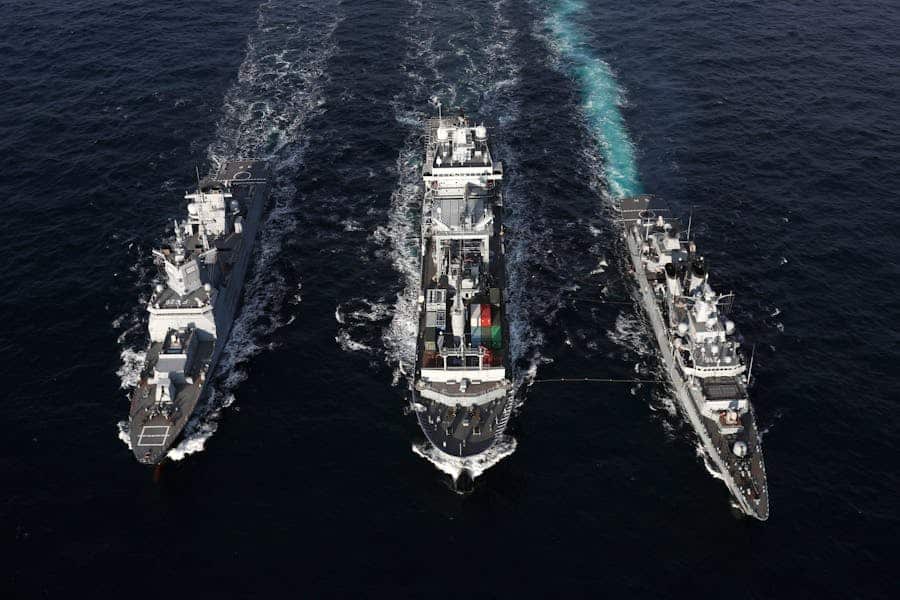
Whether the US Navy still has battleships often sparks curiosity and nostalgia. Battleships, once the pinnacle of naval power, played crucial roles in World Wars and conflicts throughout the 20th century. These massive warships, armed with formidable firepower and thick armor, symbolized naval dominance. However, the evolution of naval technology and warfare strategies has led to significant changes in fleet composition and capabilities. In this article, we will explore the history of US battleships, their current status, and the reasons behind their transition out of active service. By understanding the past and present of these iconic vessels, we can gain insights into the future of naval warfare and the role of advanced ships in maintaining maritime security.
Does The US Navy Still Have Battleships?
No, the US Navy no longer has active battleships. The last US battleships were decommissioned in the early 1990s. Modern naval warfare has shifted towards more versatile and technologically advanced ships, such as aircraft carriers, destroyers, and submarines, which offer greater flexibility and capabilities. The era of battleships has given way to new strategies and technologies that better meet the demands of contemporary maritime defense.
The Historical Significance Of US Battleships
The battleship era marked a golden age in naval history. These ships represented the ultimate projection of sea power. In the early 20th century, battleships were the backbone of the US Navy. Their massive guns and heavy armor made them formidable adversaries. Battleships played crucial roles in major conflicts, including World War I and II. The attack on Pearl Harbor highlighted their strategic importance and vulnerabilities. The advent of air power and missile technology began to overshadow battleships. By the end of World War II, aircraft carriers and submarines started to dominate naval strategy. This shift led to a gradual decline in battleship production and use.
The last battleships built by the US were the Iowa-class ships. These included the USS Iowa, New Jersey, Missouri, and Wisconsin. They were the most advanced and powerful battleships ever constructed. These ships saw action during World War II, the Korean War, and even the Gulf War. Despite their impressive capabilities, technological advancements in naval warfare made them less relevant. The development of guided missiles, long-range bombers, and nuclear submarines changed naval warfare.
By the 1990s, the US Navy decided to decommission the remaining battleships. The costs of maintenance and modernization were high. Additionally, new ships and technologies offered more strategic advantages. Thus, the era of the battleship came to an end. However, their legacy continues to be remembered. Museums and memorials across the country preserve these historic ships. They stand as a testament to naval warfare’s technological and strategic evolution.
Why Did The Us Navy Retire Battleships?
Changing Nature of Naval Warfare: Modern warfare demands versatility and technological advancements. Battleships, despite their power, lacked the flexibility needed in contemporary conflicts. The rise of air power and missile technology made them vulnerable. Aircraft carriers became more valuable because they could project air power. Submarines, capable of stealth and long-range strikes, further diminished the need for battleships.
Technological Advancements: The development of guided missiles revolutionized naval combat. Battleships, designed for direct gun battles, were not suited for missile warfare. Destroyers and cruisers equipped with advanced missile systems became more effective. The cost of upgrading battleships to handle modern threats was prohibitive.
Strategic Shifts: The focus of naval strategy shifted towards power projection and rapid response. Battleships were designed for head-on confrontations, not the multi-dimensional threats of modern warfare. Aircraft carriers and amphibious assault ships offered greater strategic flexibility.
Cost and Maintenance: Maintaining and operating battleships was expensive. Modernization efforts in the 1980s highlighted the high costs involved. The Navy had to allocate resources efficiently, leading to the decision to decommission battleships.
The Legacy Of Us Battleships
- Battleships hold a special place in naval history. They symbolize an era of naval dominance and technological innovation. Many decommissioned battleships have been preserved as museums, which educate the public about naval history and heritage. The USS Missouri, for example, is a major attraction in Pearl Harbor. It serves as a reminder of the sacrifices made during World War II.
- Battleships also played significant roles in shaping naval tactics. Their presence influenced strategic decisions during major conflicts. The design and construction of battleships pushed technological boundaries. Lessons learned from battleship design continue to inform naval engineering. The transition from battleships to modern naval vessels reflects broader technological trends.
- The preservation of battleships ensures that future generations can learn about their impact. These ships serve as monuments to the sailors who served on them. They also highlight the importance of technological adaptation in maintaining naval superiority. The legacy of battleships is a testament to the evolution of naval warfare.
Conclusion
The era of the battleship has passed, but their legacy endures. The US Navy has evolved to meet the demands of modern warfare. Aircraft carriers, submarines, and advanced missile systems now dominate naval strategy. While battleships are no longer in active service, they remain a symbol of naval heritage. Their history offers valuable lessons for the future of naval warfare. The Navy will adapt as technology advances, ensuring maritime security in an ever-changing world.
FAQ’s
Q. Why did the US Navy stop using battleships?
A. The US Navy stopped using battleships due to changes in naval warfare, technological advancements, and high maintenance costs. Modern ships like aircraft carriers and destroyers offer more strategic flexibility and capabilities.
Q. What replaced battleships in the US Navy?
A. Battleships were replaced by aircraft carriers, destroyers, cruisers, submarines, and littoral combat ships. These vessels offer greater versatility and technological advancements suited for modern naval warfare.
Q. Are there any battleships still in active service?
A. No, there are no battleships in active service with the US Navy. The last battleships were decommissioned in the early 1990s.








